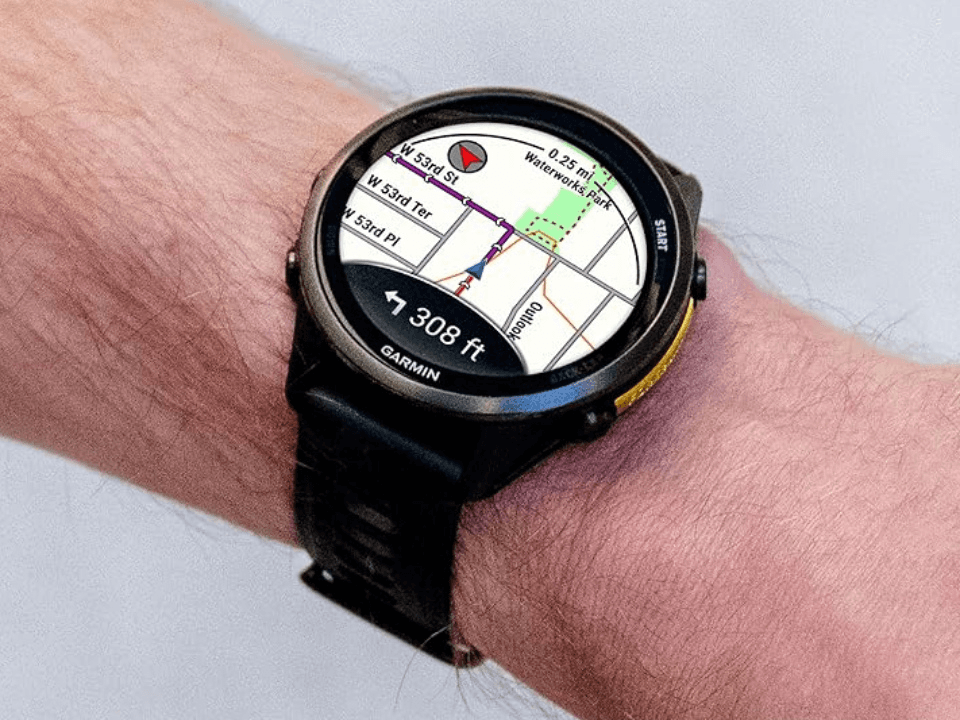Google Maps Is Saying Goodbye to Phones: Navigation Comes to Your Wrist
"Google Maps" is moving beyond smartphones as it brings full navigation to smartwatches. Discover how this change makes travel easier, hands-free, and smarter right on your wrist
Google Maps Is Saying Goodbye to Your Smartphone—Now It’s All on Your Wrist
For more than a decade, Google Maps has been the go-to navigation tool for millions of people worldwide.
Whether you are driving, walking, cycling, or even using public transport, almost everyone has relied on pulling out their smartphone, entering a location, and navigating turn by turn. But that dependency on phones for maps may soon decline.
Google has announced a new step: bringing full navigation features of Google Maps directly to smartwatches running Wear OS,
Google Maps on smartwatch
turning your wrist into a smarter navigation guide.
This change could mark one of the most significant shifts in wearable technology and navigation since the rise of smartphones.
Let’s explore what this means for users, how it works on your wrist, and why Google believes the future of maps lies in wearable screens.
The Shift from Smartphone to Smartwatch
Traditionally, smartwatches served as secondary companions to smartphones.
Notifications, fitness tracking, and lightweight apps were their core strengths.
Navigation existed in limited form, often showing small directional cues only when connected to a phone.
But with Google’s latest update, Google Maps on smartwatch is becoming fully independent. That means you will no longer need to keep your phone in your pocket or hand to follow directions.
Your wristwatch will be capable of displaying live maps, turn-by-turn instructions, estimated arrival times, and location search just like your phone does.
For runners, cyclists, or even tourists exploring new cities, this hands-free experience is a game changer. Imagine walking through a crowded market or riding a bike without fumbling to unlock your phone every few minutes—you can just glance at your wrist to stay on track.
How Google Maps on Smartwatch Works
The updated smartwatch app brings nearly all core features users are familiar with:
Turn-by-turn directions for driving, cycling, and walking.
GPS tracking built directly into the watch for supported models.
Offline maps for areas where smartphones might struggle with network connections.
Voice guidance through connected earbuds or watch speakers.
Integration with fitness modes, such as running or cycling, so that distance, speed, and navigation align.
A key part of this functionality will be the improved battery optimization built into Wear OS. Continuous GPS has historically drained smartwatch batteries, but Google claims that its new software is more efficient, making all-day navigation realistic.
Why This Move Matters
Hands-free navigation: It reduces distractions while driving or cycling.
Travel convenience: Tourists can move freely without carrying phones in hand.
Rise of wearable tech: Smartwatches are no longer accessories; they’re becoming self-sufficient tools.
Safety factor: Quick glances at a wrist are safer than holding out a phone in risky areas.
This update also points to Google’s long-term push to redefine wearables as primary computing devices, not just companions.
The Bigger Trend: Phones Losing Their Grip
When smartphones first emerged, they swallowed many devices—cameras, iPods, GPS gadgets, pedometers. But now, wearables are starting to peel some of those functions away from phones. Google Maps fully moving to watches symbolizes this shift.
In some ways, it mirrors what happened with wireless earbuds. At first, they were add-ons.
Over time, with features like voice assistants and touch controls, earbuds became smarter than we expected. Smartwatches are on that same trajectory.
The future might even mean Google Maps integrating with augmented reality on glasses, making navigation even more seamless. For now, though, the wrist is the new frontier.
Compatibility and Availability
Google has announced that all Wear OS 4 and above smartwatches will gradually receive this update. Popular devices from Samsung, Pixel Watch, and other Wear OS partners will be among the first to benefit. Apple Watch users, however, are unlikely to receive full feature parity since Google prioritizes Android’s wearable ecosystem.
The update will roll out globally in the coming months, with beta testers already reporting smoother interface designs and responsive maps on smaller displays.
Potential Challenges Ahead
While this is exciting, Google Maps on smartwatch faces some hurdles:
Battery drain remains a concern for heavy GPS users.
Small display limitations could make complex maps harder to view.
Connectivity issues may arise for watches that don’t have built-in LTE.
User adoption depends on how comfortable people become navigating on tiny screens.
Still, technology often starts with limitations and improves over time.
Remember when early smartphones had poor cameras and weak batteries?
Wearable navigation may follow the same path, maturing into something indispensable.
What This Means for You
If you’re a regular Google Maps user, this update changes how you think about travel.
Instead of relying solely on your phone, you have a new, more accessible option.
Casual joggers, commuters, and even international travelers will benefit from carrying less and depending more on their smartwatch.
For tech enthusiasts, it’s a sign that Google is betting big on the wearable-first future.
The smartwatch isn’t just for checking heart rates or replying to texts anymore—it’s becoming a true digital assistant on your wrist.
Final Thoughts
Google Maps on smartwatch is not just a feature update; it’s a glimpse into how devices will evolve in the next decade.
Smartphones aren’t going away,
but some of their monopoly on key everyday functions is being challenged by wearables. And for users, that’s a win.
The idea of saying goodbye to phones for navigation might have sounded strange a few years ago, but with this update,
it feels like the most natural next step. The wrist is now the map, the guide, and the assistant.
As wearable adoption grows, we may soon look back at the era of pulling out our phones every few minutes—and wonder how we ever lived that way.
